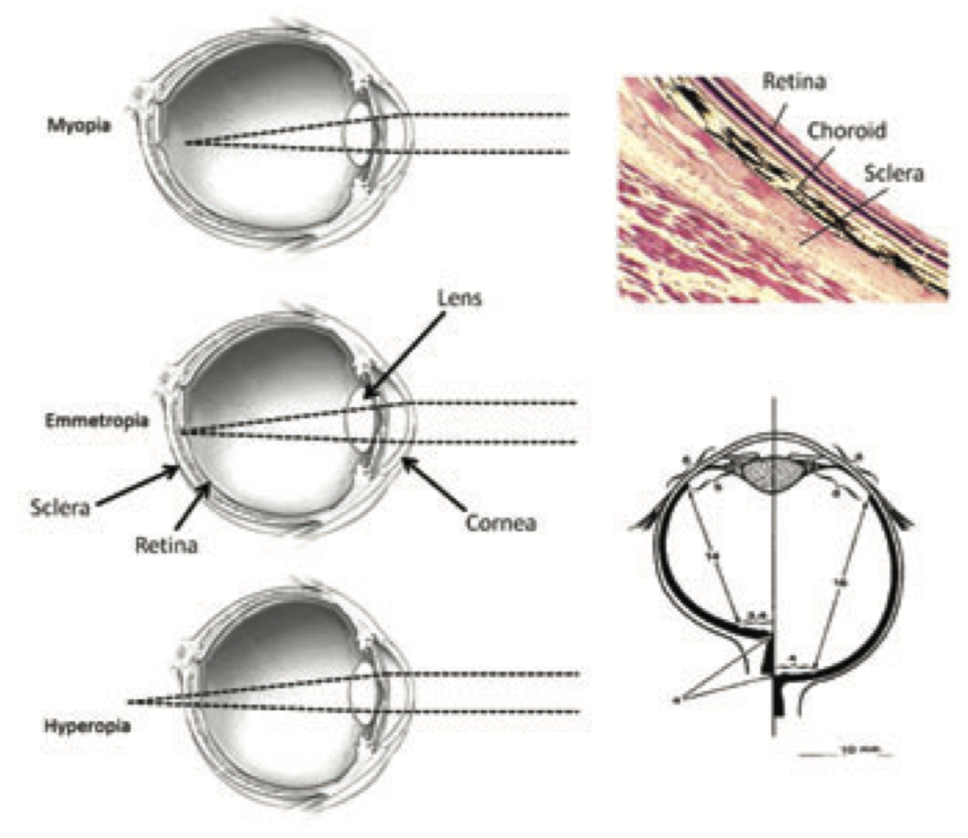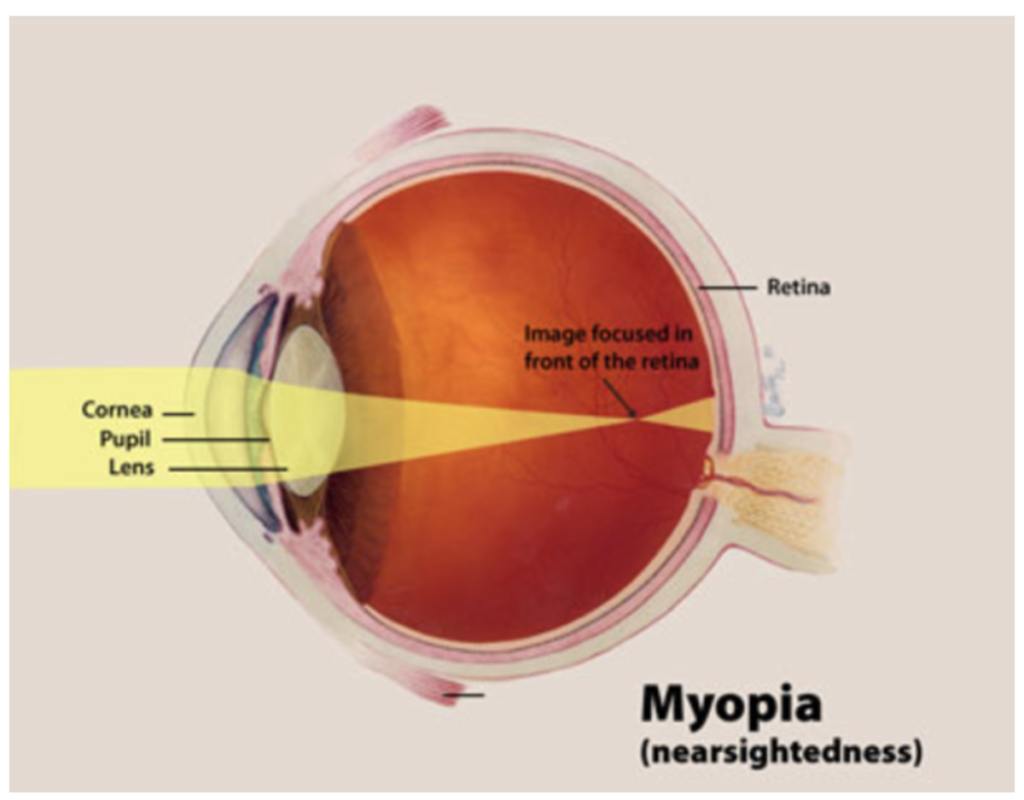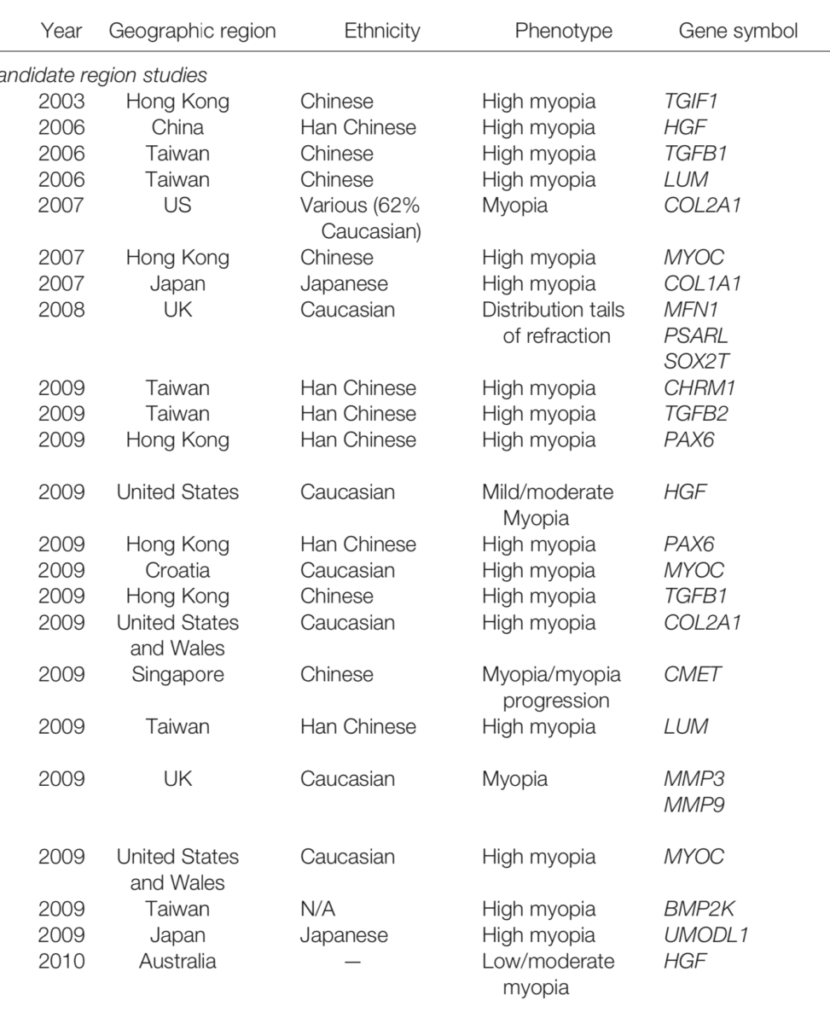When I was in high school, I started to notice that if I sat far away from the board, I couldn’t read the words as well as I could if I were closer to the board. I thought it was normal that things were slightly blurry if they were far away because humans are not perfect, so neither are our eyes. However, when I was a Senior, I realized that something must be wrong with my eyes because I simply could not read the board at school if I was far away from it. I complained to my mom that I couldn’t see things far away and she told me “I’m surprised you made it this far in life.” My mom has had glasses since fifth grade, so she knew I would one day come to her complaining about my eyesight, especially since everyone in my family wears glasses. She finally took me to the eye doctor, and we discovered that I was indeed nearsighted. I got glasses, which corrected my vision, and went on without much more thought about it, just grateful I could finally see. It wasn’t until this class when we started learning about our eyes that I gave my nearsightedness another thought.
In class we started learning about the different parts of the eye and what they do, and how they help us perceive any stimuli we might encounter. However, talking about the defects of the eye caught my attention because I have an eye anomaly. It was in this class that I learned how my eyes specifically actually work. I was fascinated about nearsightedness and how the focal point is too far forward and not on the surface of the retina like it should be. This causes distant objects to appear blurry. I learned that the glasses I wear are made up of a convex lens to help bend the light that enters my eye back to the surface of my retina.
Now that I know how my eyes actually work, I started wondering if my nearsightedness is due to my genes. Is it a coincidence that my grandparents, mother, and I wear glasses? Is it even more of a coincidence that all of them are also nearsighted? Typically, people who have nearsightedness, also known as Myopia, have eyeballs that are too long, which causes the focal point to be too far forward (National Institute of Health, 2020).


*Diagrams of eyes with Nearsightedness and Farsightedness compared to a normal vision eye.
Myopia is the one of most common optical defects, predicted to affect 2.5 billion people in 2020 (Wojciechowski, 2010). While Myopia can be caused by environmental factors, this trait can also be linked back to one’s genome. Ocular refraction can be inherited. Reports found that heritability estimates for ocular refraction range from 50% to more than 90% (Wojciechowski, 2010). Also, children of parents who have Myopia tend to have longer eyes as well, and therefore develop Myopia. This trend spreads across populations all across the globe. However, there is no singular “myopia gene”, but many genes can factor together to create this defect.

*Part of a table that shows all the different gene symbols present in different people with Myopia.
Many of these genes have been found to be X-linked, therefore hereditary Myopia is more common in female family lines since females have two X chromosomes, while males only have one X chromosome. Myopia linked genes can also be found in mutations in the loci that determine photoreceptor functions, as well as in heritable tissue disorders (Wojciechowski, 2010). There have been many studies over the years trying to find specific genes that link to different cases of Myopia. The first study in 1998 mapped the MYP2 gene in people who suffer from severe nearsightedness (Wojciechowski, 2010). Some of these genes (MFN1, PSARL, and BLID, which are the main ones) are linked to cell death driven by the mitochondria, which can lead to ocular refraction (Wojciechowski, 2010).
I am so grateful I took this class because it allowed me to learn about myself and my family. Before this class, I took my glasses for granted and never fully understood how they worked or why I truly needed them in the first place. My nearsightedness is not just a coincidence, nor is it a coincidence that members of my family are also nearsighted. I have learned that the defect in my eyes, while may be caused by external factors, is mainly a result of my genes that were passed down to me and the genes I will likely pass on to the future generation.


Bibliography
National Institute of Health. 2020. Nearsightedness. U.S National Library of Medicine [Internet]. [cited 2020 Feb 26]. Genetic Home Referece. Available from: https://ghr.nlm.nih.gov/condition/nearsightedness
Wojciechowski, Robert. 2010. Nature and nurture: the complex genetics of myopia and refractive error. An International Journal of Genetics and Molecular and Personalized Medicine. 79: 301-320.
Eye Diagrams: NHI and Wojciechowski (cited above)
Table: Wojciechowski (cited above)
Pictures of my family: Me!
This was very interesting and cool! I never knew that myopia was X linked on the genome. I agree with your point of taking your glasses for granted, because I never thought about what was happening with my vision, I just knew that my vision was being corrected. My question is: what are the environmental factors that can influence myopia, and is the gene for myopia dominant or recessive? This was really interesting!
I found this post particularly interested because I shared the same exact experience. My sister, father, and mother have all been prescribed glasses, and it wasn’t until senior year that I realized I needed them as well because the board started getting blurry sometimes. It was cool to hear that ocular refraction can be inherited, but can also be caused by factors in the environment. Also, I did not know that myopia was more commonly passed down in female family lines because they have two X chromosomes. It’s interesting to think about how we will both likely pass down this gene to our children and future generations such as it has been passed down in our families, and I question whether the future will bring about a way to manipulate this gene to prevent its passing down (if you believe this is even ethical?)!
I enjoyed a lot reading your post! As someone who has been diagnosed as nearsighted since the second grade, growing up, I couldn’t help but wonder if my nearsightedness is genetically passed down by my parents (especially my mom). It was an aha moment for me that I found out that myopia is actually X-linked on the genome. Also, I was very much surprised by the data that myopia is predicted to affect 2.5 billion people in 2020. I did not know that nearly 1/3 of the entire population has myopia, and I wonder how this research defined myopia.